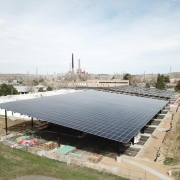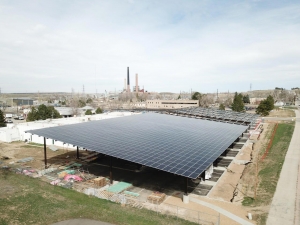Lead Boulder to a decarbonized, decentralized energy future
This letter appeared as a guest opinion in the Boulder Daily Camera
My late father-in-law was Charles David Keeling, the collector of atmospheric data that announced to the world that the burning of fossil fuels was accelerating the warming of our climate.
In the 1990s, I did not believe a small concentration (equivalent to 40 cents in $1,000) could have such disastrous effects. Then in 2010, our foothills home was destroyed in the Four Mile Canyon Wildfire, and for three succeeding years, a major wildfire visited Colorado. In 2013, we experienced floods of biblical proportions. Science predicted these and other consequences. I was forced to reconsider my denial.
Since then, I have come to realize that the abolition of fossil fuels resembles other historical abolition movements. Like historical abolitions, we need to move from the status quo to the status new. In our time, the use of fossil fuel is being replaced by clean renewable energy. As in previous movements, we are experiencing some resistance from “business as usual.”
The average American is responsible for 17 metric tons of CO2 per year. The average Boulder citizen is at 14 metric tons. Science tells us the Earth is capable of consuming 3 metric tons per person per year. To bring us back from the brink of a climate emergency, we need to produce less than the 3 metric tons.
So let’s bring these numbers down to Earth: 17 metric tons per year equals 100 pounds per day; 14 metric tons equals 85 pounds per day, and 3 metric tons equals 18 pounds per day. The The Intergovernmental Panel on Climate Change informed us last October that we need to get our carbon diet down to 2 metric tons per person per year, or 12 pounds per day, in the next 11 years. Why are we voluntarily strapping 67 extra pounds on our backs each day?
Our home was on the 2019 Boulder Green Home Tour on Sept. 28. We have managed to reduce our household carbon footprint from an initial 17 metric tons per person to 2 in less than four years on a modest 60-year-old home. We are consuming and storing good clean energy harvested from our roof, and exporting any surplus. We are resilient: If the grid goes down, we have four or five days of battery storage, and if the sun shines we will be producing and storing while the grid restores itself. We can go further, and will. We own our energy future. There are 44,000 existing residences and 13,000 commercial buildings in Boulder. What an investment possibility.
Now, you may say you cannot do so personally. There is an initiative you may have heard about called municipalization: attempting to do at community scale the work done at our household scale. What do we know?
• A square yard of the Earth receives 5 kilowatt hours on a sunny day
• A kWh is equivalent to burning 3,414 wooden kitchen matches end to end, 30 two-minute microwaves, run a 60 watt light bulb for 16 hours, or charge your smartphone two hours per day for a month.
• That same square yard of Earth can currently harvest 0.75 kWh per day (15% efficiency)
• An average home consumes 30 kWh of electricity a day (900 kWh a month or 10,800 a year). This is serviceable by 40 square yards or 360 square feet of solar panels.
• The cost of harvesting this solar has gone down 80% in the last eight years.
• Bids from Boulder’s 2018 Request For Indicative Pricing reveals a $40 million savings for renewable per year over business as usual.
• On a per-person basis, this represents a $370 savings per year (108,800 population).
• The running per-person cost of municipalization is $160 ($17,199,492 divided by 108,800).
Municipalization represents a $160 investment to realize $370 per year savings per person. In the process, we move our population closer to the magical 12 pounds carbon per day. We also get to entertain becoming a bona fide Carbon Neutral City and demonstrate to the world what a decarbonized, decentralized and democratized future looks like right now. Boulder will continue to lead the charge. We also own our energy future.
Why wouldn’t we do this?








